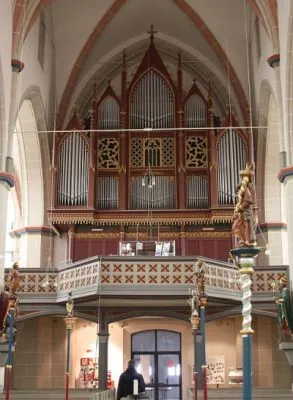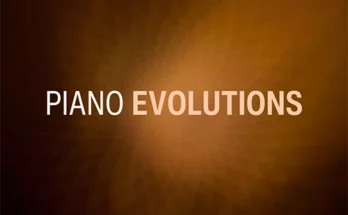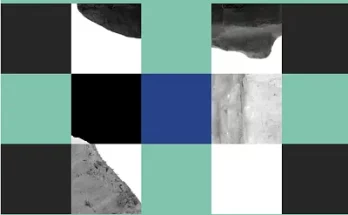The organ in the Catholic Church of Dingelstedt (Germany) was built by Anton Veith (1902–1979) in 1932/33. It was recently restored by Karl Brode, an organ master from Heiligenstadt, who returned the instrument to its original design. The instrument has 3 manuals, a pedal, and 45 speaking registers, as well as numerous playing devices and couplings.
Its tonal characteristics primarily correspond to the German Romantic style, but it was also influenced by many other concepts. Veith had his own views on organ sound, and he was very creative in this matter. In Dingelstedt, we hear many sources of inspiration. There are Romantic elements.
These include some elements of the neo-Baroque concept: mutations, Glöckchen 1′, terzian. The influence of the theatrical organ style: the entire organ in a sweller body, the unusual character of the divisions such as “Main”, “Accompaniment”, “Solo”, flutes like “tibia clausa”, etc. And the original tremolante for the entire organ.
The layout of the divisions is as follows: the lower part of the organ body is occupied by the pedal registers, and above it is the accompaniment section, controlled from the lower keyboard. The upper part of the organ body is reserved for the sections of the second and third keyboards, both enclosed in a single swell box.
However, the entire organ was originally enclosed in a large swell box with a blank front panel. We decided to simulate this behavior for our Hauptwerk model. The swell pedal affects the entire instrument, including the pedal registers, just as Anton Veit intended. Alternatively, a special switch switches the swell pedal to operate only the 2nd and 3rd manuals, mimicking how the instrument operates today.
We also added a faux tremolante to the 2nd manual to bring the model closer to the original Feith design.
Each section has its own characteristics: Manual 1 is mezzoforte, accompanying the entire orchestra. Manual 2 is the color section. Manual 3 is the most intense section, offering both solo and the organ’s most powerful registers. The tuba in this section is at a higher pressure than the trumpet in Manual 1, and the mixture forms the apex of the organ’s plenum.

- Download Sonus Paradisi – Dingelstaedt Virtual Organ Part 1 & 2 (HAUPTWERK)
- Original Publisher: Sonus Paradisi
- Category: Sound Libraries
- Require: Hauptwerk 4.2
- License type: Full
- Download Size: 20.79 GB + 21.31 GB





The download links are the same for part one and two….